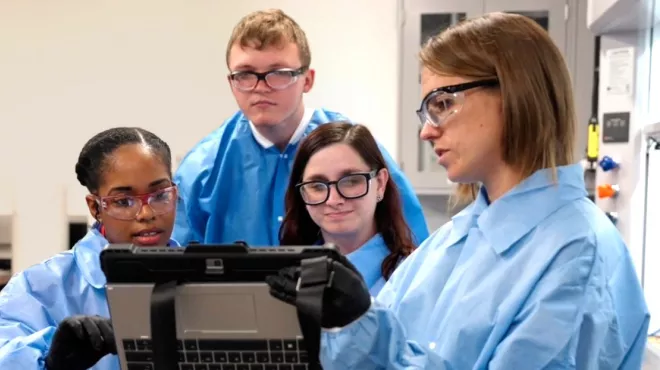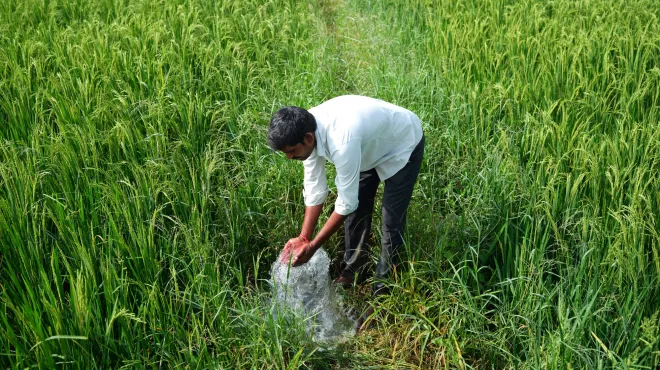“Back in Argentina, you never think of going for a real drug, but coming to Novartis completely changed what I thought was possible,” says Bernardo Bazet Lyonnet, a postdoctoral researcher who first came to Novartis in 2016 as a Next Generation Scientist (NGS). This program invites talented scientists from around the world for a bi-directional learning exchange at the Novartis campus in Basel, Switzerland.
“The program encouraged us to grow and network as much as we could, and also to find Novartis collaborators for our research,” says Bazet Lyonnet. “It made me realize that I could go the next step in my own project: a search for a new tuberculosis drug.”
Before his fellowship, Bazet Lyonnet had been working on an innovative drug target for tuberculosis. But the labs back in Argentina weren’t equipped to turn his discoveries into a search for new drugs. Novartis is no longer focused on tuberculosis research but is open to assisting external researchers who are. In this case, Novartis could offer precisely the resources and expertise that he needed – resources expressly made open and accessible to support the discovery of new medicines both within and outside of Novartis.
A project in need of collaborators
Tuberculosis is among the 10 most common causes of death worldwide, and multidrug-resistant tuberculosis – against which available medications are no longer effective – is a persistent problem.
To help combat this global epidemic, Bazet Lyonnet has been working with his mentor, professor Hugo Gramajo of the National University of Rosario in Argentina, to find new strategies to treat tuberculosis. After years of work, they found a weakness in the tuberculosis bacteria’s defenses: proteins called acyl-CoA carboxylases. These proteins create the building blocks of the bacteria’s protective cell wall, and if this process is blocked, the bacteria do not survive.
“We had shown that these proteins were good targets; they appear to be essential for the bacteria,” says Bazet Lyonnet. “But we didn’t have any way to look for molecules that could potentially become a real drug.”
What I did in those three months was much, much more than what would have been possible in Argentina.
Bernardo Bazet Lyonnet, a postdoctoral researcher in the Novartis Next Generation Scientist program
Taking the next step
Bazet Lyonnet’s networking efforts eventually led him to Jérôme Giovannoni, an investigator in the Chemical Biology and Therapeutics group at the Novartis Institutes for BioMedical Research (NIBR).

“Dr. Bazet Lyonnet first asked for a lab tour, but we rapidly derailed and started speaking about his tuberculosis project,” says Giovannoni. “This is a new and potentially relevant tuberculosis target.”
Their conversation quickly turned to the limitations that Bazet Lyonnet was facing in Argentina. As it turned out, much of what he needed – in terms of both facilities and molecular libraries – was available through openly accessible resources at NIBR.
“We always have collaborations with both internal and external groups to enable innovative research,” says Giovannoni. “Our resources, like the FAST Lab, are accessible to anyone.”
The Facilitated Access to Screening Technologies (FAST) Lab offered the compound testing tools that Bazet Lyonnet needed. In addition, the Novartis public compound library – roughly 50,000 non-proprietary drug-like molecules – provided the molecules for him to get started.
Giovannoni and the NGS program team then worked together to organize and sponsor a three-month-long extension fellowship so that Bazet Lyonnet could return to Basel the following year and begin his search for a new drug.
Enabling discovery
“What I did in those three months was much, much more than what would have been possible in Argentina,” says Bazet Lyonnet.
Thanks to the lab space, materials, equipment, and know-how of his collaborators, Bazet Lyonnet was able to optimize his methods, search through the entire public compound library, and successfully find a handful of compounds to investigate further.
Bazet Lyonnet returned to Argentina with a network of collaborators for the next steps in his drug discovery research. Through Novartis, he met not only internal experts, but also external experts, such as professor Kelly Chibale, leader of the H3D drug discovery and development center in South Africa. All of these researchers are dedicated to collaborating across institutions to speed the discovery of treatments for underserved populations.
Main image: An Argentinian researcher discovered a promising tuberculosis drug target. With external help from Novartis, he was able to begin his search for a new medicine.
Through an external collaboration with Novartis, a researcher has made progress in his search for a new #tuberculosis drug.



